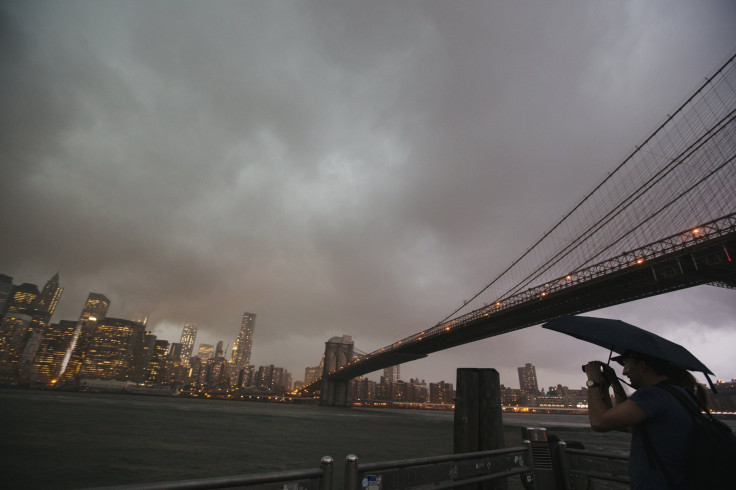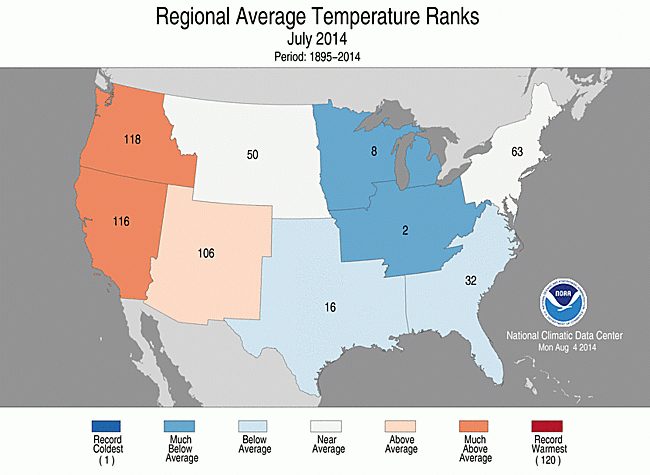Climate Change 2014: This Summer's Weather Is Even Stranger Than We Thought: 20% Of Country In Extreme Heat Or Cold This Year

The weird weather patterns sweeping the United States this year are even stranger than we thought. Extremely hot temperatures in the West and extremely cold temperatures to the East are simultaneously affecting more parts of the country than ever before, federal climate scientists say.
“This is the most unusual year – as far as this bipolar, red state-blue state temperature situation – since the record began in 1900,” Deke Arndt, chief of climate monitoring at National Oceanic and Atmospheric Administration's (NOAA) National Climactic Data Center, told reporters on a Thursday press call.
He said that in other years the U.S. has experienced greater areas of extreme heat than we’re seeing this year, but with smaller areas of extreme cold. The reverse is also true.
The difference this year is that from January to July both extremes have affected the country equally – with about 10 percent of the country in extreme heat and 10 percent of the country in extreme cold, compared to a typical year.
“Both warm and cold values are close to 20 percent. That is the farthest that both of those metrics have reached,” Arndt said. An even greater amount of the country saw “very” warm or cool temperatures in July.

The unusual weather is largely the result of a persistent pattern in the North American jet stream. A significant “dip” in the air current this summer is pushing cool Arctic air down on the eastern half of the U.S. and causing hotter air to take over west of the Rocky Mountains. As a result, last month Indiana and Arkansas each had their coolest July on record, while several Western states had one of their warmest Julys ever.
Overall U.S. temperatures, however, were near average last month, since the extremes on either side of the country canceled each other out. Globally, the Earth experienced its fourth-hottest July on record.
© Copyright IBTimes 2024. All rights reserved.





















